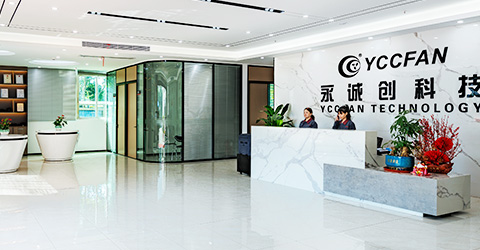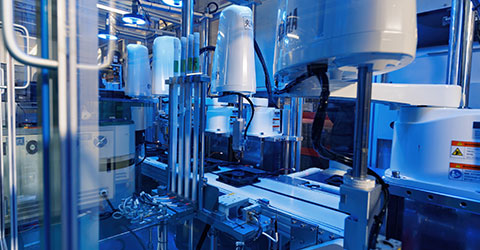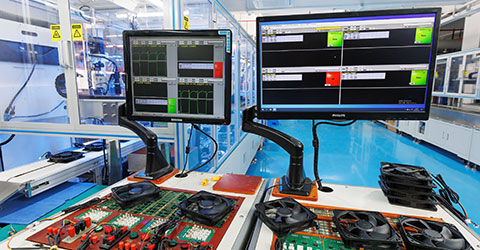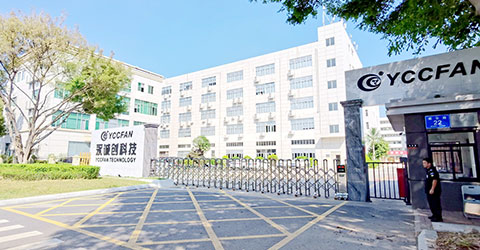Centrifugal Fan vs. Axial Fan (Part 1): Working Principles and Best Use Cases in 2025
In the world of industrial and commercial airflow management, choosing between centrifugal fans and axial fans is a critical decision that impacts performance, energy efficiency, and operational costs. While both types move air, their designs and applications diverge significantly. In this comprehensive guide, we’ll break down the key differences, technical specifications, and real-world use cases to help you make an informed choice.
1.Understanding the Basics: How They Work
1.1Centrifugal Fans
lWorking Principle:
Centrifugal fans operate on Bernoulli’s Principle. The rotating impellers, which ha
ve curved blades, accelerate air in a radial direction. The energy conversion process takes place as follows: kinetic energy from the impeller is transformed into static pressure through the scroll housing. As the air velocity decreases in the expanding scroll, the pressure rises.
lTechnical Breakdown:
Airflow Path: he air moves from the inlet to the impeller eye, then undergoes radial acceleration, passes through the scroll housing, and finally exits.
Pressure Generation: The static pressure can be calculated using the formula: Static pressure = ½ × air density × (exit velocity)².
lNotable Features:
High Pressure Capability:Ideal for systems requiring air movement against resistance (e.g., ductwork, filters).
Case Study: The TPI AF120 Centrifugal Fan maintains 5,000 Pa at 3,000 m³/h, suitable for industrial dust collection systems.
lTechnical Specifications Example:
Model | TPI AF120 | Performance |
Impeller Material | Aluminum alloy | Lightweight yet durable |
Motor Type | EC (Electronically Commutated) | 95% efficiency at full load |
Speed | 1,800 RPM | Adjustable via VFD (500–2,400 RPM) |
If you want to know more about the centrifugal fan technical specifications, you can click https://www.yccfan.com/product/products.html.
lBrands:
Brand | Strengths | Typial Applications | Highlights |
ebm-papst (Germany) | Energy-saving, compact, quiet | , electronics, medica | EC motors, long life, green tech |
Cincinnati Fan (USA) | Industrial-grade, customizable, fast delivery | Factories, dust collection, paint booths | Heavy-duty, made in USA, flexible options |
Greenheck (USA) | HVAC leader, efficient, full-system solutions | Commercial buildings, kitchens, cleanrooms | Integrated systems, durable, LEED-ready |
YCC Fan(China) | Low noise High power, save electricity ODM, OEM service | Automotive communication telecommunication home appliances medical care | ODM, OEM stringent quality standards ISO9001, ISO14001, and IATF16949 |
1.2Axial Fans
lWorking Principle:
Axial fans rely on helical blade design and adjustable pitch. The angled blades create a pressure difference, propelling air parallel to the shaft. The energy transfer is dominated by kinetic energy, with only a minimal increase in static pressure.
lTechnical Breakdown:
Airflow Path:Air enters through the inlet, is swept by the blades, undergoes axial acceleration, and then exits.
Flow Rate Calculation:The flow rate (m³/h) is calculated as the product of blade area, rotational speed, and air density.
lKey Features:
High Airflow Capacity: Perfect for ventilation systems that require rapid air exchange.
Case Study: The Comair Rotron 480 Series Axial Fan delivers 15,000 m³/h at 500 Pa, suitable for large-scale data center cooling.
lTechnical Specifications Example:
Model | Comair Rotron 480 | Performance |
Blade Material | Carbon-reinforced plastic | 30% lighter than aluminum |
Motor Type | AC induction | 82% efficiency at 1,200 RPM |
Power Consumption | 0.75 kW | Supports 24/7 continuous operation |
The Axial Fans' power is stronger than the Centrifugal Fan, which can support 24 hours of all-day use, not only these, but other more comprehensive, learn more from https://www.yccfan.com/product/cooling-fan.html.
lBrands:
Brand | Strengths | Applications | Highlights |
ebm-papst (Germany) | Compact, efficient, low noise | HVAC, IT cooling, refrigeration | EC motors, wide sizes, IP-rated |
S&P (Spain) | Cost-effective, easy install, quiet | Residential, kitchens, ventilation | Wall/duct fans, low noise, CE-certified |
Ziehl-Abegg (Germany) | High-end, silent, smart control | Data centers, cleanrooms, agriculture | ECblue motor, long life, smart features |
YCC Fan(China) | Low noise High power, save electricity ODM, OEM service | Automotive communication; telecommunication home appliances medical care | Small size stringent quality standards
|
1.3 Performance Comparison: Key Metrics
Metric | Centrifugal Fan | Axial Fan |
Airflow | Moderate (50–50,000 m³/h) | High (1,000–100,000 m³/h) |
Pressure | High (100–10,000 Pa) | Low (100–2,000 Pa) |
Efficiency | 85–95% | 70–85% |
Noise Level | Low to moderate (50–70 dB) | Moderate to high (60–85 dB) |
Power Consumption | Higher for equivalent airflow | Lower for equivalent airflow |
Applications | HVAC systems, dust collection | Ventilation, cooling towers |
2.Applications: Selecting the Appropriate Fan
2.1Centrifugal Fans
lHVAC Systems:
Due to their high - pressure capability, they are ideal for forced - air heating and cooling systems.
Example: A Texas office building uses Greenheck centrifugal fans to circulate conditioned air through ductwork.
lIndustrial Processes:
Powder coating, chemical processing, and fume extraction.
Case Study: A German automotive plant uses EBM-Papst centrifugal fans in paint booths to maintain precise airflow.
lDust and Material Handling:
High-pressure capability moves heavy particulates.
Eg: A Brazilian mining company uses Donaldson centrifugal fans for ore processing ventilation.
2.2Axial Fans
lBuilding Ventilation:
Provide large - volume air movement in warehouses and stadiums.
Example: The Sydney Cricket Ground uses Jet Fan Solutions axial fans for natural ventilation.
lCooling Systems:
Data centers, refrigeration units, and engine cooling.
The size of the Cooling fan carried in the cooling system is different, if you need a small cooling fan size,https://www.yccfan.com/product/cooling-fan.html.
Our high-speed cooling fans range in size from 20 mm to 250 mm.
Case Study: Google’s data centers in Finland rely on Nidec axial fans for energy-efficient cooling.
lTransportation:
Vehicle radiators, bus air conditioning, and train ventilation.
Eg: Tesla uses Delta Electronics axial fans in battery thermal management systems.
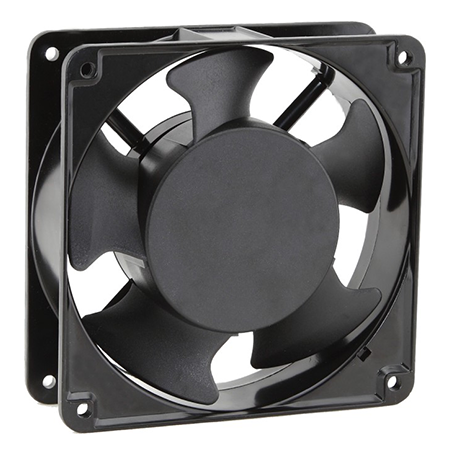
Conclusion:
This paper expounds the working principle and application scenarios of centrifugal fans and axial fans to help users better distinguish the centrifugal fans and axial fans.


